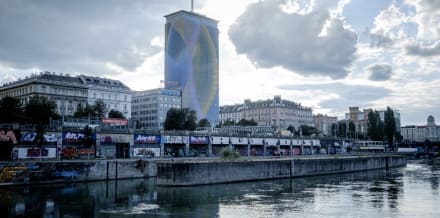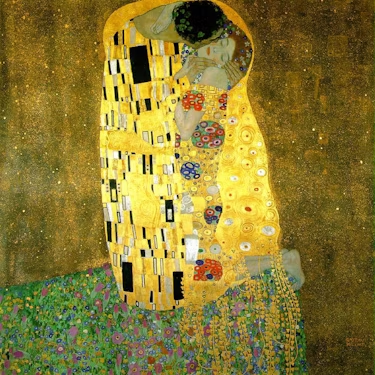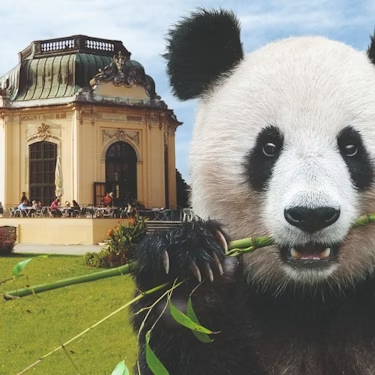More about: Vienna in 3 Days: tips, what to see, and much more
Vienna was the heart of the Great Austro-Hungarian Empire and its monuments remind us of this period of splendour. It is a fascinating, compact and easy-to-navigate metropolis, making it the ideal destination for a long weekend.
Day 1: The essentials of Austria's capital city

We start the first day with the essentials of the city. Stage one takes us to the Landstraße district, an area halfway between the old town and the business district.
Stroll in the gardens of Belvedere Palace
It was the summer residence of Prince Eugene of Savoy and houses a large art collection. The jewel in the crown is Gustav Klimt's "The Kiss". This oil canvas is the artist's best-known work, was painted during his "Golden Period" and is a tribute to love in its purest form.
Belvedere Palace is surrounded by a large French-style garden. The work was commissioned to Dominique Girard, a hydraulic engineer and landscape designer who had worked in Versailles.
If you would like to delve deeper and learn more about the Palace from an art historian, you can book a private guided tour of the Belvedere Palace.
Enter Vienna's eclectic jewel, Karlskirche
Walking for just over fifteen minutes along Prinz Eugen-Straße you will reach the next stop on the tour: the Church of St. Charles Borromeo (Karlskirche). Its imposing central body is covered by a 72-metre-high dome and preceded by two slender towers that pay homage to the Trajan Column in Rome.
It was erected during a plague epidemic in honour of the archbishop of Milan who had fought the plague two centuries earlier. In addition to masses it regularly hosts classical music concerts.
By the way, I recommend you buy your Vienna Flexi Pass or at least take a look at all it has to offer: free queue-free access to 40 tourist attractions, unlimited use of the sightseeing bus, boat trips on the Danube and much more.
Visit the art collection of Prince Albert of Saxony
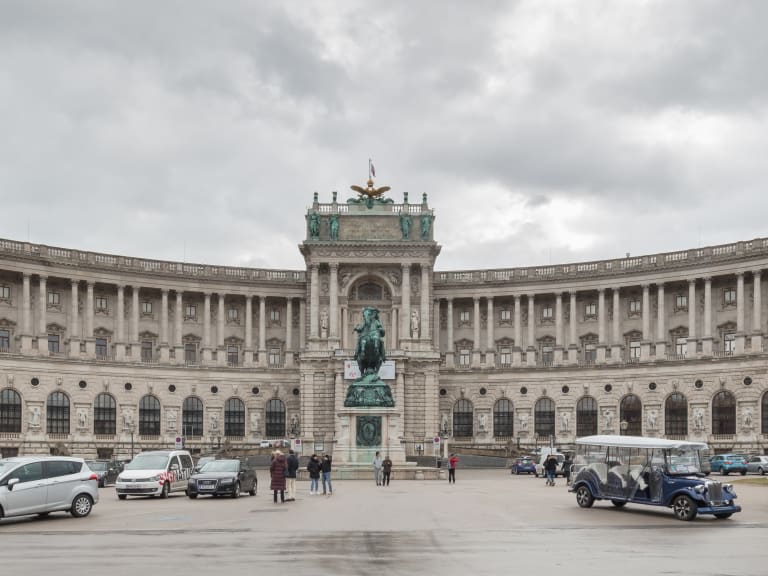
Housed in a former Habsburg residential palace, it houses paintings by artists such as Dürer, Klimt and Monet. The collection brings together a wealth of works from French Impressionism, Russian Avant-Garde, German Expressionism and other movements.
Among the highlights are Picasso's "Mediterranean Landscape" and Monet's "Water Lily Pond".
Booking a private guided tour of the Albertina Museum is the best way to get to know this jewel of pictorial art.
Taste the typical Viennese sausages
Just a few metres from the Albertina you will find a kiosk that is a must-visit stop in the city: Bitzinger Würstelstand. It's a family-run business that can also be found in the Prater, near the famous panorama wheel.
The most popular choices are:
- Bratwurst: spiced and fried sausages.
-Käsekrainer: a generous pork sausage stuffed with small pieces of cheese.
- Ottakringer Wiener Original: a historic local beer.
Enter the Kaisergruft, the Capuchin Crypt
After lunch, head to the Imperial or Capuchin Crypt (Kaisergruft), the cemetery of the Habsburg dynasty which houses the tombs of 12 emperors and 19 empresses along with other royalty.
All the tombs are priceless pieces of art, but the most remarkable is the double sarcophagus of Maria Theresa and her husband, Emperor Franz I, by Balthasar Ferdinand Molls.
The Kaisergruft is open daily from 10:00 to 18:00, with the last entrance at 17:30. The entrance fee is €8.
Walk to Stephansplatz
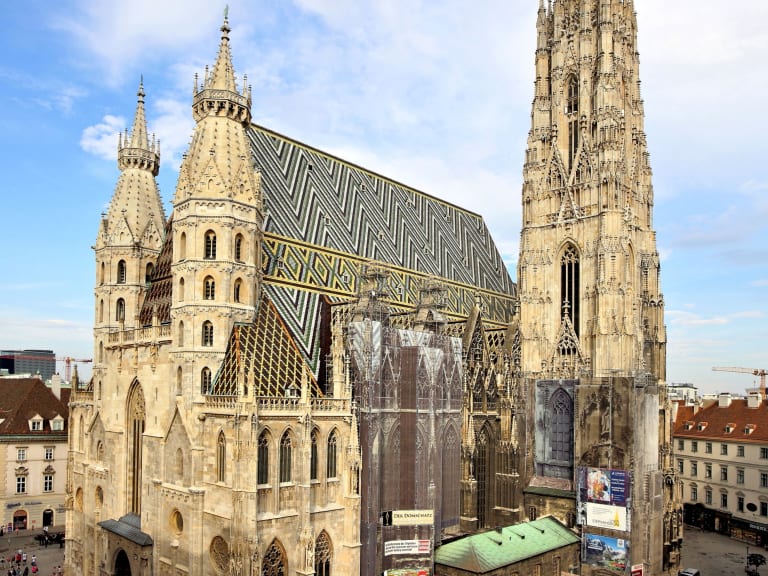
You are at "kilometre zero" of the Austrian capital and at the foot of a majestic church: St. Stephen's Cathedral (Stephansdom). It is the most important Gothic building in the city and a true symbol of the city, along with the Prater wheel and Schönbrunn Palace. By the way, if you feel like taking a trip back in time and entering one of the most important palaces in Europe, I recommend you book a guided tour of Schönbrunn Palace. It will leave you speechless!
Inside you will see the marble sarcophagus of Emperor Frederick III, the catacombs and an extensive collection of relics. If you want to go shopping, you can opt for a stroll along Kärntnerstrasse, one of Vienna's main shopping streets.
Wiener Riesenrad and Kugelmugel
Take the red metro line from Stephansplatz and get off at the Praterstern stop. When you reach the surface you will see the silhouette of the Vienna Ferris Wheel (Wiener Riesenrad), a gigantic panoramic wheel built to celebrate the Golden Jubilee of Emperor Franz Joseph I located in the Prater, the city's most famous park.
In this same green area there is a unique attraction: the Independent Republic of Kugelmugel. It is a wooden sphere that housed the studio of the artist Edwin Lipburger. The man entered into a dispute with the Austrian government, refused to pay taxes and declared the autonomy of his circular residence (Antifaschismusplatz 2).
Day 2: The nearby capital

For the second day I suggest you leave Vienna for an excursion to Bratislava. The Slovakian capital is less than 60km from Vienna and is easy to reach by train, bus and boat, but I recommend booking an excursion to Bratislava from Vienna so that you can forget about any logistics and just focus on enjoying yourself.
What to see and do in the centre of Bratislava
Bratislava is a peaceful city with a rich history. It does not have the same fame as Vienna or Prague, yet it is becoming increasingly popular.
Book a trip to Bratislava from Vienna and you 'll arrive by catamaran, and then head to the Old Town, a beautifully preserved area around the old town hall.
Here are the capital's must-see attractions:
- Hlavne Namestie, the main square. It is surrounded by sights such as the Kutscherfeldov Palace, the Old Town Hall and the King Maximilian Fountain. A few metres away is one of the best cocktail bars in the city: Spin. In December it hosts a picturesque Christmas market.
- St. Martin's Cathedral, the church that hosted the coronation ceremonies of the Hungarian sovereigns. If you look up, you'll see a golden royal crown at the top of the bell tower.
- Bratislava Castle, the fortress that withstood the Tatar raids. It is very elegant and has four wings and a tower at each corner. It houses the Museum of History, which houses some impressive gold and silver work.
- St Michael's Gate, the only survivor of the 14th-century fortification system. The dome and the figure of the saint fighting the dragon were added in the 18th century.
- Blue Church, an Art Nouveau jewel dedicated to the Empress of Austria, St. Elisabeth, who was born in Bratislava. On clear days, its silhouette blends into the sky.
Eat in a traditional restaurant

Booking a tour to Bratislava with lunch is a super convenient option, because it includes two traditional Slovak dishes and you don't have to worry about choosing a restaurant. You might try some of the typical Slovak dishes, such as:
- Bryndzové halušky, dumplings made with grated raw potatoes, egg and flour.
- Bryndza, a very tasty sheep's cheese.
- Soups, such as garlic soup, served in a bread bowl, are a classic.
- Game dishes.
- Freshwater fish, especially trout, carp and pike.
If you haven't chosen this option, don't worry, because Bratislava's Old Town has no shortage of dining options:
- Slovak Pub is a city institution, the ingredients come from their own organic farm as well as the bread and pastries that are baked daily by local farmers (Obchodná 62).
- At Meštiansky Pivovar I recommend the spicy pork ribs and duck leg confit with red cabbage.
Enjoy the best panorama
Before heading back to Vienna I recommend climbing the Slavín, the monument commemorating the Soviet soldiers who died in World War II. It stands on a hill near the castle and offers a beautiful view of the whole city.
The walk is very pleasant as it takes place in an upscale neighbourhood, among mansions and embassies. The column is almost 40 metres tall and at its top is a sculpture of a soldier holding a flag.
Day 3: Classic Vienna

After a day in Bratislava it's time to return to Vienna. There is much more to see and the route on the third day will not disappoint.
Make your way to the Old Stock Exchange
The old Stock Exchange building was opened in 1771 in the name of Empress Maria Theresa and was in operation until 1860, when it was moved to the Palais Ferstel
This neoclassical building is the perfect place to start your tour: it is located in the heart of Vienna and is surrounded by numerous cafés with excellent breakfast.
Stand in awe in front of Vienna's second highest church
The Votivkirche is a temple of rare beauty. This imposing neo-Gothic building was completed in 1879 and commemorates the failed assassination attempt on Emperor Franz Joseph. From the outside, the two twin towers and the three portals with archivolts that form the entrances stand out.
You can visit it from Tuesday to Saturday from 10:00 to 18:00. On Sundays the opening hours are shorter: from 13:00 to 18:00, as masses are held there in the morning.
It also houses a museum whose flagship is the Antwerp Passion Altar, a 15th-century Gothic tabernacle depicting scenes from the Passion of Christ. Restoration in the 1960s has restored it to its former splendour.
Enter the most prestigious classical riding school in Vienna
The Spanish Riding School with its famous Lipizzaner horses is another must-see in the Austrian capital. Horse enthusiasts flock here to admire the ballet of the white stallions. Riders and animals train every day and the constancy provides an incredible harmony.
Please note that some jumps (e.g. Courbette, Levade and Capriole) are not performed every day to avoid overworking the horses. It is well worth attending a training session at the riding school and seeing these extraordinary animals.
After the show, you can take a break in the riding school bar.
Discover the charms of the Imperial Palace
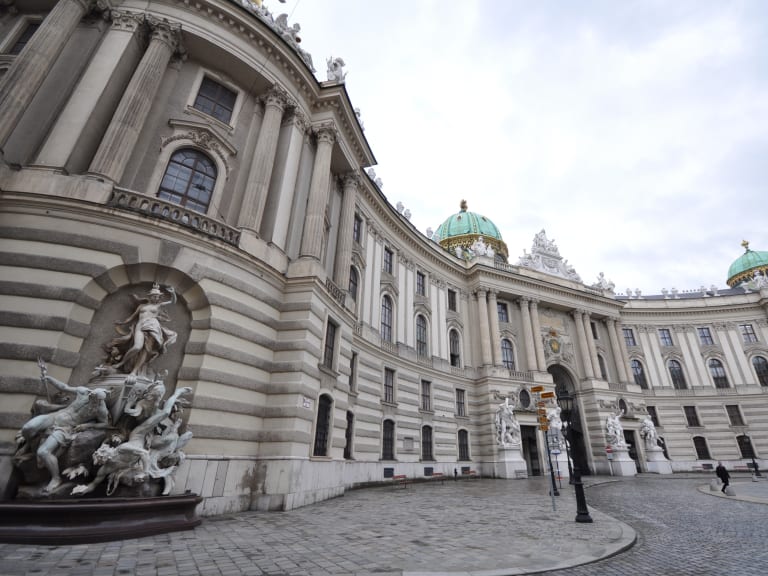
Vienna's Hofburg or Imperial Palace has a long history behind it. The building was first mentioned in an official document in 1279 and housed the rulers of Austria until World War II. After the fall of the Austro-Hungarian Empire, it retained its political vocation, becoming the official residence and workplace of the country's president.
It is so large that there is space for a museum dedicated to Princess Sisi, which aims to show the true personality of the often misunderstood empress.
Stroll through the Stadtpark
This was Vienna's first public park and is best known for the Johann Strauss memorial. It covers an area of 65,000 square metres and is a real oasis of peace.
The pond and its ducks make for a very romantic scene. If you are travelling with children, you will be pleased to know that there is a large playground with swings, slides, a skate park and a football pitch.
End your trip with a classical music concert
The tour on the third and final day concludes at Annakirche, the church dedicated to St Anne.
Although its exterior is rather nondescript, the most beautiful thing is hidden behind its walls: it is a baroque jewel with exceptional acoustics, so a good way to enjoy this setting is to book a classical music concert at St. Anne's Church.
You will listen to the melodies of Mozart, Beethoven and Schubert while admiring the frescoes on the vault and the elegant statues that decorate the church. The perfect finale to your stay in the city.
Is a three-day trip to Vienna worthwhile?

Of course it is! It was one of the most important cities in Europe and the capital of a great empire. It has a wealth of monuments and three days is the minimum to explore it thoroughly.
Please note that our route is designed for a long weekend, but if you choose to stay for four or five days, there's no shortage of things to do.
